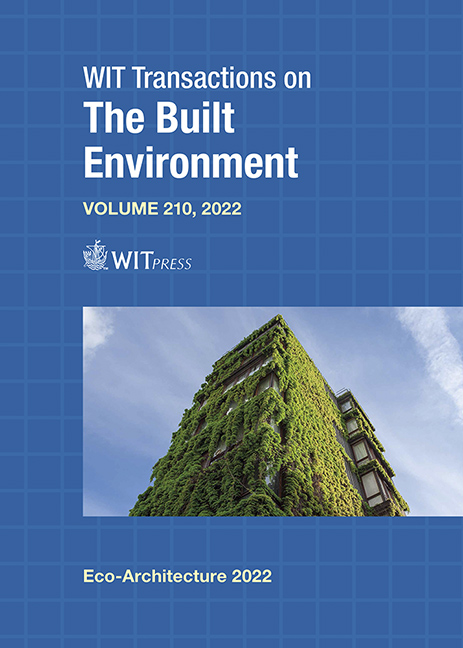URBAN FABRICS OF HOUSING FORMS AND ITS IMPACT ON HUMAN BEHAVIOR
Price
Free (open access)
Transaction
Volume
210
Pages
12
Page Range
77 - 88
Published
2022
Paper DOI
10.2495/ARC220071
Copyright
Author(s)
MONICA H. FAHIM, AHMED M. SOLIMAN, DINA SAADALLAH
Abstract
An individual’s psychological life and their incorporation with the built environment have a remarkable relationship with urban space syntax. The scarcity of positive communication between humans and place-making is considered the core problem. This phenomenon occurs when urban designers ignore the role of humanity during the design process without taking into consideration its influence on the development of urban spaces. An individual’s well-being and their quality of life are affected by the degree of residential satisfaction. Factors contributing to residential satisfaction include: (1) physical factors that could be determined in the availability of parks and facilities in the community; (2) social factors that could be determined in the feeling of belonging to a community; and (3) personal factors that could be determined in people’s duration of residence and homeownership. The paper aims to examine the relations between human behavior and urban housing form through investigating the human behavior associated with the physical environment and determine the factors affecting it. The paper’s assumption is that improving the quality of the space syntax will increase the residents’ belonging to their built environment, in addition to enhancing their residential satisfaction. Increasing levels of sense of community, sense of belonging, and sense of place could achieve residential satisfaction. To further explain the relation between human behavior and physical built environment regarding sense of community, sense of belonging, and sense of place, the study applies its findings to a selected study area in the city of Alexandria, Egypt. The results revealed strong correlation between physical built environment and human behavior.
Keywords
human behavior, built environment, residential satisfaction, sense of community, sense of belonging, sense of place





